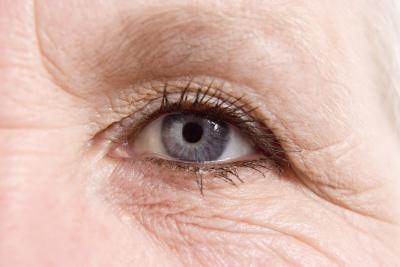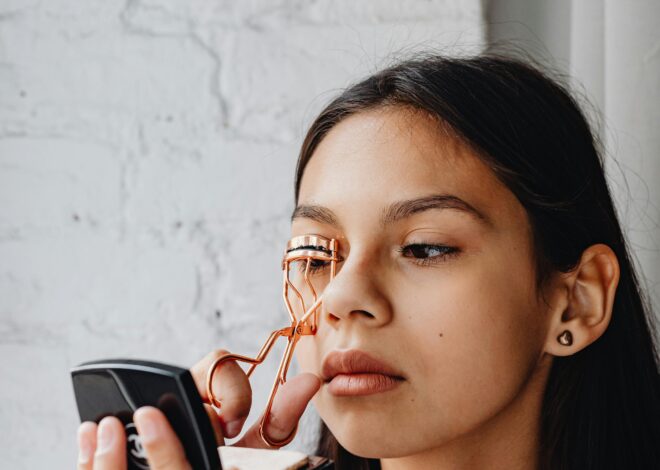Although everybody eventually gets them, wrinkles aren’t something most people look forward to developing. As you age, the thin skin around your eyes tends to lose its elasticity. Sun exposure and repeated movements such as squinting and smiling can increase your risk of developing crow’s feet, the small creases that form horizontal lines near the outside of your eyes. Certain topical and medical treatments may help reduce the appearance of your crow’s feet.
Over-the-Counter Solutions
Non-prescription eye creams are often the first line of defense in preventing and minimizing small lines, such as the beginnings of crow’s feet. These products may contain a variety of ingredients, including alpha-hydroxy acids, coenzyme Q10, antioxidants and copper peptides. While these may result in slight improvements, MayoClinic.com cautions that the low concentrations of active ingredients mean that your results are usually limited. Using daytime eye creams that contain sunscreens may help protect your delicate eye area from additional sun damage.
Prescription Creams
Topical retinoids are substances derived from vitamin A. Creams, gels and lotions that contain retinoids, such as tretinoin and tazarotene, may help reduce fine wrinkles. These prescription creams can cause sun sensitivity, making it important to protect your skin from the sun. Common side effects of topical retinoids include redness, itching, burning and excessive dryness.
Injections
While soft tissue fillers that contain collagen, fat and hyaluronic acid may help smooth out deep wrinkles in your face, botulinum toxin, or Botox, works well on crow’s feet, according to MayoClinic.com. Botulinum toxin therapy begins to take three to seven days after the injections and lasts about three to four months. The injections weaken and relax the muscles, decreasing your ability to squint. In addition to creating a smoother appearance, botulinum toxin therapy may also help prevent the formation of new lines.
Laser Resurfacing
Laser resurfacing uses an intense beam of light to destroy the outer layer of skin and heat the underlying layer, helping to stimulate the growth of new collagen fibers. This can result in smoother and tighter skin around your eyes. Depending on the extent of your treatment, your recovery time may take up to several months.
Surgery
Often the last resort for many women, cosmetic surgery can help tighten and smooth sagging skin, including the thin skin around your upper and lower eyelids. Bruising and swelling are common after cosmetic surgery and may last for several weeks. While surgical procedures may last five to 10 years, new wrinkles may appear as your skin continues to age.





